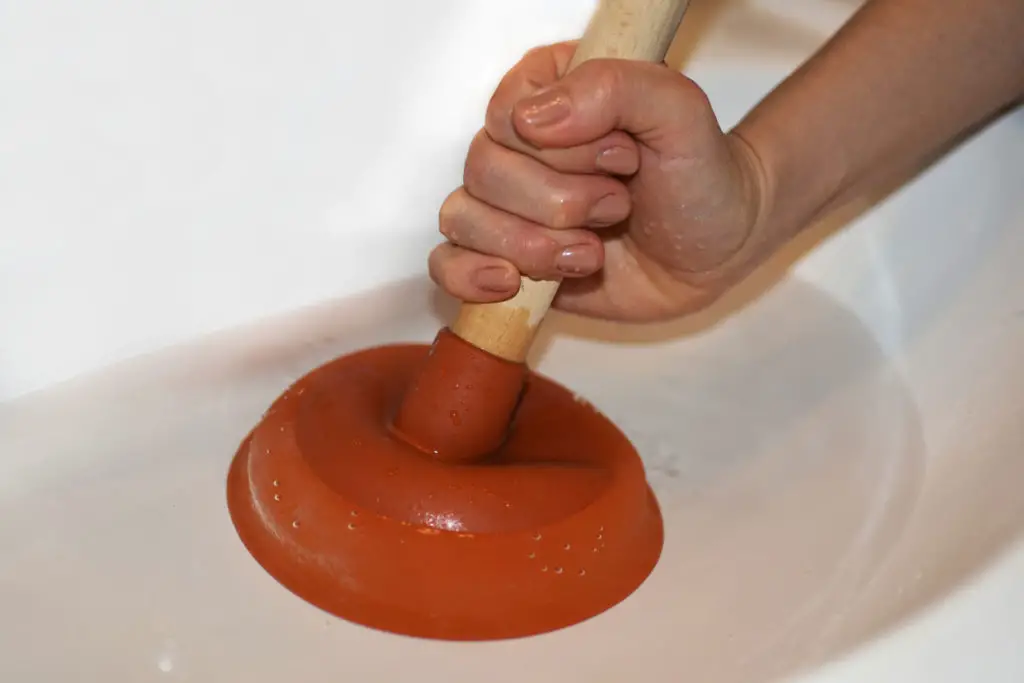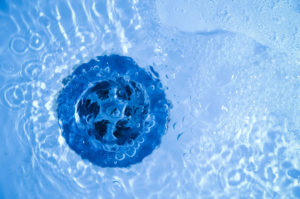Clogged bathtub drains are the stuff of nightmares – not only are they painfully dirty to look at and cause extreme inconvenience, but the plumbing bill can also take a noticeable chunk of your monthly income. And even if you can afford to pay someone to clean your clogged drains, you might have to wait a long time for them to show up and actually get to work.
So why struggle with all of this and go through such hassle when you can quickly unclog a bathtub drain yourself without much effort?
This article explains various ways you can fix a clogged bathtub drain in a short amount of time.
Methods to unclog a bathtub drain
There are multiple different methods for properly cleaning your bathtub drain – or other types of drain for that matter. These include the use of strong chemicals, mild liquids and cleaning products, or plumbing tools. None of these methods is the ‘best method to unclog a bathtub drain’ because the right method depends upon different factors such as the type of clog, your budget, and your preferences.
Chemical Drain Cleaner
With so many drain-clearing products readily available at affordable rates, this is perhaps the most convenient way to get rid of gunk and fix your drain. This especially works well if you don’t have much experience in cleaning a clogged drain. All you’ll have to do is pour some chemical down the drain as per the instructions written on the product container.
Chemical drain cleaners contain chemicals such as potassium hydroxide and sulfuric acid which can wipe clean even the dirtiest and grimiest of surfaces. Before using a drain cleaning chemical, make sure you’ve taken precautionary measures and worn gloves and/or goggles. Such chemicals are often hazardous and give off strong fumes. To avoid this, it is better to know beforehand how you should handle it. Along with this, most manufacturers also mention the amount of product you should put into the bathtub drain. Carefully measure that amount because even slight excess might cause damage to your drain. Moreover, pour the liquid slowly down the drain to avoid any spills. If any liquid accidentally falls somewhere, immediately wipe it. Finally, let the drain cleaner sit in the drain for 15 to 30 minutes. The exact time varies from product to product.
Once the required time has elapsed, the drain should be completely cleared. Run cold water over the drain to see if the drain is working properly. If you still observe slow draining, immediately contact a plumber. In any case, do not keep adding more chemicals as the combination of various chemicals can give toxic and hazardous results.
Here is a list of a few popular and highly effective drain cleaners you can easily find in the market nearby or online. But before buying any product, carefully read its description to know whether it is suitable for use with your pipes and drainage system.
Thrift Marketing GIDDS-TY-0400879 Drain Cleaner
- This product is highly durable
- This product adds a great value
- This product is manufactured in United states
The chemicals in this product are activated only after hot water is poured over them. Also, this one is believed to clear the drain in just 60 seconds, provided the instructions are properly followed.
Green Gobbler Drain Clog Dissolver
This cleaner can dissolve paper, hair, soap, and grease. Not only does this product remove gunk from the drain but its formula clings to the drain pipes to avoid any debris collection. Green Gobbler Drain Clog Dissolver is also much safer than using sodium hydroxide or products containing it. A few major pros of this drain cleaner are that it is odorless and non-toxic.
Instant Power 1969 Hair and Grease Drain Opener
- STRONGEST FORMULATION IN THE MARKET: Instant Power's hair and grease drain...
- EFFECTIVE AGAINST HAIR & GREASE: Dissolves hair and creates heat to melt...
- SAFE AND EASY-TO-USE: Our clogged drain opener uses a non-acid formula, so...
Specially designed to liquefy grease and hair, this product is safe for all types of plumbing pipes. It is instructed to leave the solution in the drain overnight for optimal results.
However, if you’re not too keen to use risky chemicals and do not want to spend anything to buy drain cleaners, there are other methods you can use which won’t cost you a dime and will be extremely safe. Read on to find the most suitable method for solving your bathtub drain problems.
Manually
The simplest of all the methods is manual removal. Just put on a pair of rubber or latex gloves and get to work. Depending upon the type of drain, you might need to unscrew it first. Once that is done, remove the strainer or drain cover and try to find the cause of the clog. Whether it is hair, soap scum, or any other drain-clogging material, simply take it out using your fingers. Once you’re done, pour some water over the drain to get rid of any residual debris and obtain a clean bathtub drain.
And sure, this method is a bit too unhygienic but it takes absolutely no time, money, or weird combination of products to get the water flowing smoothly through your bathtub. That being said, just be careful and work slowly when you’re trying to grab any materials stuck inside the drain. If you’re moving around your hands too quickly or grabbing clog-causing materials too roughly, you might end up pricking your fingers or hurting your hand. That being said, most clogs are caused due to hair and soap which aren’t very difficult to remove with fingers.
Boiling Water
Before doing any heavy lifting, start with simpler and easier methods. Many a time, a bathtub drain gets clogged due to the build-up of shampoo and soapy remains over a period of time. If this is the case with your bathtub drain, there is no need to buy expensive chemicals or use difficult tools. All you need is boiling hot water.
Add a good amount of water to a large pot and bring it to a boil. Then gradually pour the water down the clogged drain. This will break down the gunk and clean the bathtub or shower drain. However, make sure that you do not pour boiling water over plastic tools such as a bathtub drain or stopper because extremely hot water has the tendency to react unsafely with plastic.
Although this strategy might not work at all if the drain is clogged by hair, for example, but for simpler cases such as that where shampoos, conditioners, soaps, or other hair and body products have clogged the drain, this is an inexpensive, easy, and quick cleaning solution.
Baking Soda and Vinegar
This perhaps the most talked-about and widespread ‘DIY’ solution to unclog a bathtub drain. For multiple reasons, the combination of baking soda and vinegar works wonders to fix your draining issues.
Pour one-fourth cup of baking soda down the drain and let it settle for 15 to 20 minutes. Afterward, pour one cup of white vinegar into the drain. This causes the baking soda and vinegar to react vigorously. One of the products of this reaction is carbonic acid which works excellently to unclog your bathtub. Towards the end, if you feel the need to clean up the entire mess, you can pour some boiling water down the drain.
This quick and all-natural solution is ideal for those who do not want to invest in strong chemicals or use tricky tools to fix drain clogs. This method is perfect for mild clogs which is the case for most types of a clogged bathtub drain at home. While there are other combinations of acids and salts that can dissolve icky messes and clean clogged drains, baking soda and vinegar make a widely used and effective pair.
Drain Claw or Plumber’s Snake
Another way you can unclog your bathtub drain is by using a drain claw. Though this method also requires some manual effort, it is more thorough and uses a drain claw to properly unclog and clear the drain. A drain claw is also referred to as a drain stick or a plumber’s snake.
Start by removing the drain stopper or drain strainer. A strainer is located over the drain and might need to be unscrewed first. Take a screwdriver, twist it in one direction gradually over each screw until it comes loose. Remember to place the screws in a safe location before you begin the next steps. Some drains come with a stopper instead of a strainer. A stopper is located in a drain and isn’t usually held by any screws so it is easier to work with. Thus, you just need to twist and lift it out of the drain.
Next, clean the strainer or stopper thoroughly. Sometimes, it isn’t the drain but the drain strainer or drain stopper that is clogged due to gunk. Take a wet cloth, properly scrub, and remove any excessive debris. Once done, place it aside and insert the drain claw deep inside the drain. Towards the bottom of the drain, the drain claw will hit a drain trap which is a slightly curved part. At this point, keep pushing the drain claw or stick. Don’t worry about it breaking because this stick is quite flexible and easily bends.
After a while of pushing and moving around the drain claw, take it out of the clogged bathtub drain. Due to many hooks and small spikes, hair and other material get attached to the drain claw. Clean the stick if you want to reuse it. Lastly, place the stopper or strainer the same way you removed them.

Plunger
A plunger is a commonly used bathroom tool and works very well with clogged drains. The kind of clog you are dealing with along with the dimensions of your drain determine how well a regular plunger performs to unclog a bathtub drain. Lastly, the quality of the plunger also matters.
Like many methods on this list, start by removing the stopper or strainer and then scrubbing it clean. Next, add some water – just up to a few inches – to the bathtub and then plunger vigorously. The addition of water along with the movement of the plunger create suction in the tub. This sucks the debris out of the drain. To enhance this process, put some petroleum jelly around the plunger’s rim to make an improved seal. You need to repeat this several times. After around 10 plunges, check to see if any dirty water and debris are coming out of the drain. If not, exert more force on the plunger.
Fair warning, this method is likely to get messy because you will need to use a lot of force with the plunger which will result in the water and gunk being splashed around. This is also why a high-quality plunger lasts longer and works better because it is able to withstand vigorous plunges.
Strainer or Stopper Removal
Sometimes, the problem isn’t even with your drain. The issue isn’t actually a clogged bathtub drain but a dirty and clogged strainer or stopper. This method is extremely simple and all you need to do is to remove the strainer or stopper and thoroughly clean it.
Most bathtub drains have either a strainer – covering the top of the drain – or a stopper – placed inside the drain. A strainer might need to be unscrewed first with a screwdriver but a stopper usually has no screws so it is easy to remove the stopper simply by gripping and taking it out. Once this is done, store any screws at a safe place because even a single lost screw can prevent the strainer from properly being fixed into its location.
Most of the gunk found on the strainer or stopper will be hair and soap. Get a wet cloth and vigorously rub it against the stopper or strainer to remove excess debris from around it. Make sure you scrub the rim real well because a lot of gunk resides and begins to harden underneath it. After the strainer or stopper is completely cleared of all gunk, wash it with water, and place it back at its position. You might need to re-screw the strainer.
This method is recommended for mild and simple clogs so it likely won’t work for a highly clogged drain and can’t fix a drain-clogging problem that has remained for long.

As the resident shower expert at ShowerJournal.com, Wayne Lee loves to share the helpful tips and tricks he’s picked up over the years during his job as a handyman.



